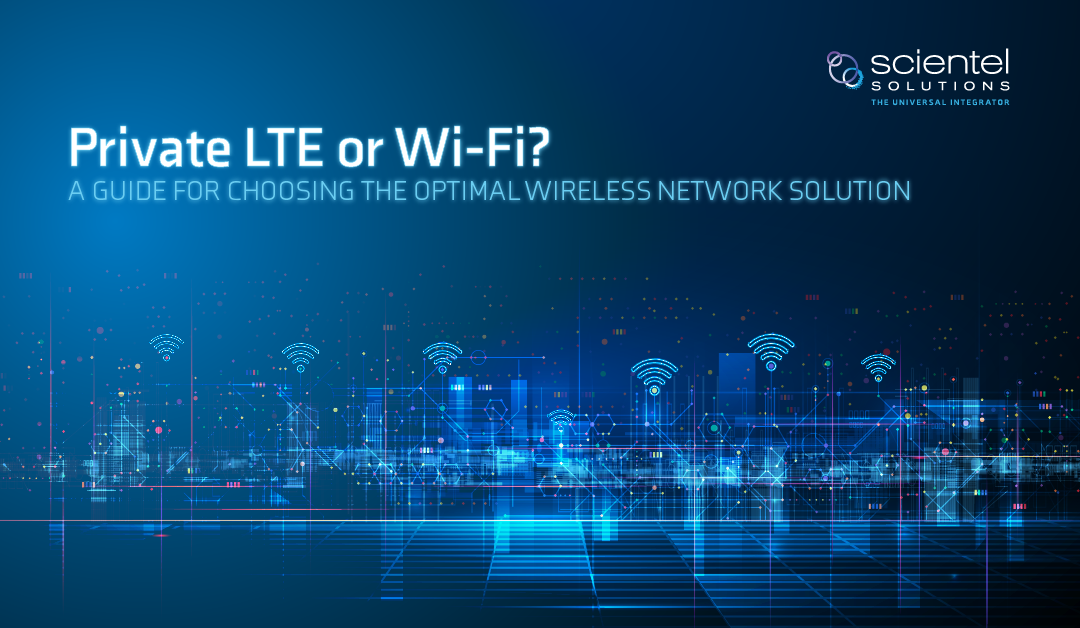by Joe Mayer, Chief Operations Officer
Wi-Fi has become the norm for providing wireless network access in modern offices, warehouses, and event spaces everywhere, but it does have its limitations. Long-Term Evolution (LTE) emerges as a complement or replacement in certain scenarios due to recent changes in the Federal Communications Commission (FCC) Spectrum licensing. Finding which internet solution works best for your organization comes with a myriad of factors. Here are a few things to consider when choosing between Private LTE or Wi-Fi.
Coverage and Range:
- Private LTE provides broader coverage and range, suitable for applications requiring extensive geographic reach, like industrial campuses or remote locations. With LTE extended coverage users can cut costs for deployment, maintenance, and devices.
- Wi-Fi typically has a shorter range compared to LTE. If your application requires broader coverage, especially in outdoor or remote areas, LTE might be a better choice.
Reliability and Quality of Service (QoS):
- LTE ensures high reliability and QoS, prioritizing traffic for consistent performance, making it ideal for mission-critical applications such as industrial automation and public safety. Private LTE also gives users lower latency and seamless handoffs to enhance reliability, especially for mobile devices.
- Wi-Fi networks can experience interference and congestion, which may affect reliability. However, advancements like Wi-Fi 6 have improved performance in crowded environments.
Capacity and Scalability:
- Wi-Fi is highly scalable and can be easily expanded, however, increasing its scalability will require more access points. In smaller environments, Wi-Fi becomes more feasible where expansion is a less frequent requirement.
- LTE can handle more devices for small payloads. When your users do not need extreme bandwidth, but instead more reliable connectivity in a crowd, LTE may be a better choice.
Security:
- While Wi-Fi networks can be secured, achieving enterprise-grade security may require additional measures when compared to LTE.
- Private LTE networks feature built-in security and operate on licensed frequency bands, which can provide higher security than Wi-Fi by limiting access to the spectrum. Limiting access to the network can be critical for industries prioritizing data security, such as healthcare, finance, and government.
Interference and Congestion:
- LTE copes better with interference and congestion, operating on dedicated frequency bands, and providing a stable connection in high-density environments.
- In challenging or large settings Wi-Fi can get bogged down with interference. Though the advancements of Wi-Fi 6 have worked to reduce these issues, it still does not hold up as well as LTE.
Mobility:
- LTE supports high-speed mobility, making it suitable for applications involving moving vehicles or equipment, crucial in transportation, logistics, and manufacturing.
- Wi-Fi is typically designed for stationary devices within a specific range while LTE is generally more suitable for scenarios involving more mobility, such as in vehicles or machinery.
Ultimately, choosing between Private LTE and Wi-Fi depends on an organization’s specific needs. For organizations that need a simple internet solution, Wi-Fi may be a suitable option. Wi-Fi is generally more cost-effective to deploy, especially for indoor environments or smaller-scale deployments. On the other hand, private LTE comes with built-in security features, increased range, and provides better performance in high-volume environments. For organizations that need to operate a closed network, private LTE can prioritize traffic and ensure consistent connection, making them suitable for mission-critical applications. While determining which best fits your organizational needs, one should consider factors like coverage, scalability, mobility, and application criticality.
Scientel Solutions, experienced in deploying both Private LTE and Wi-Fi solutions, stands ready to assist in making the best choice for your operation from planning through installation and support needs.

